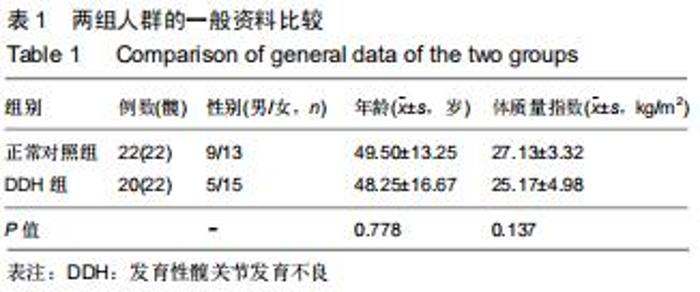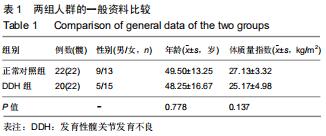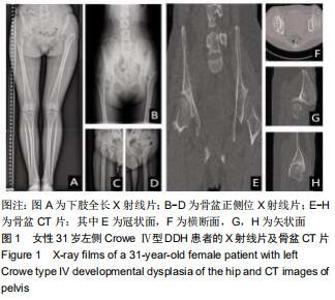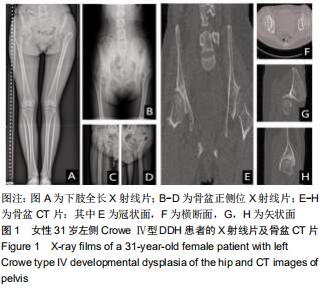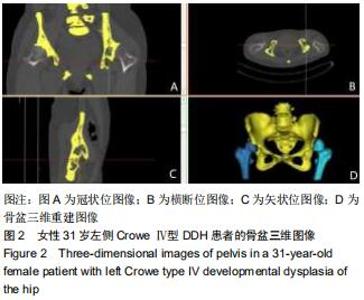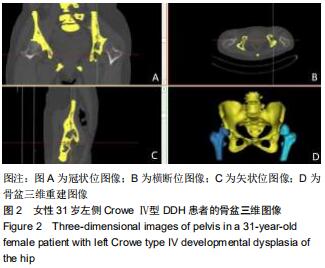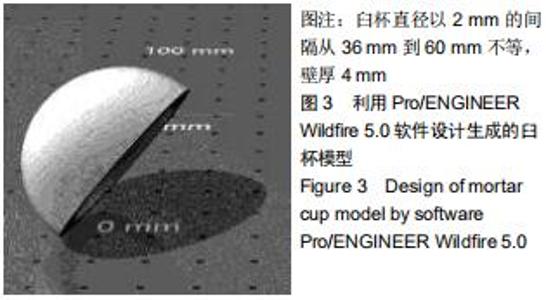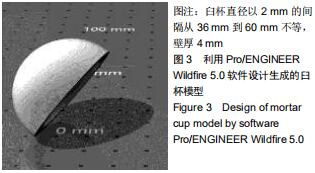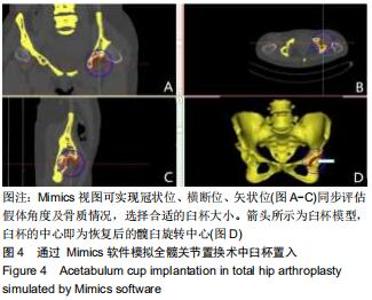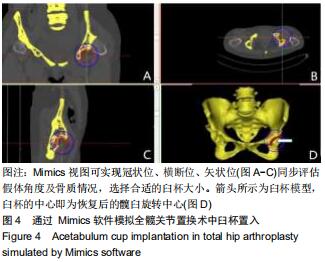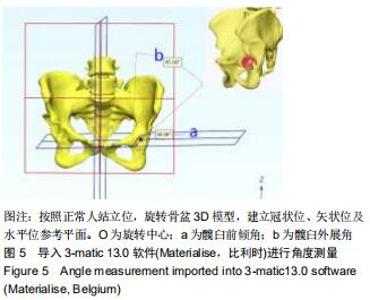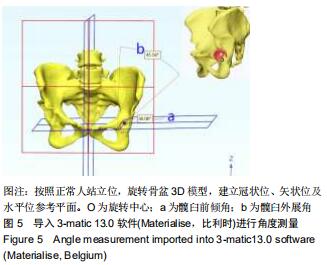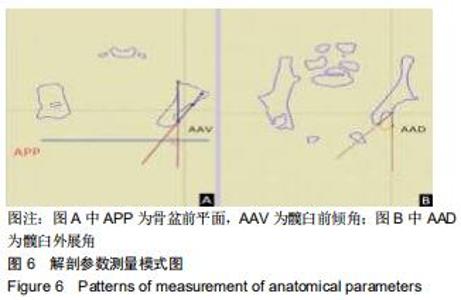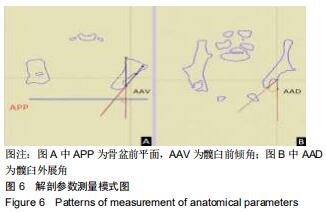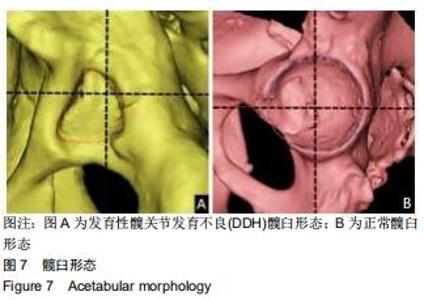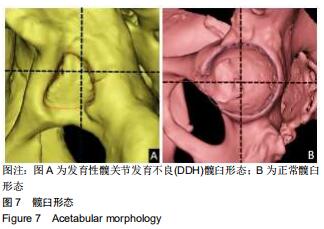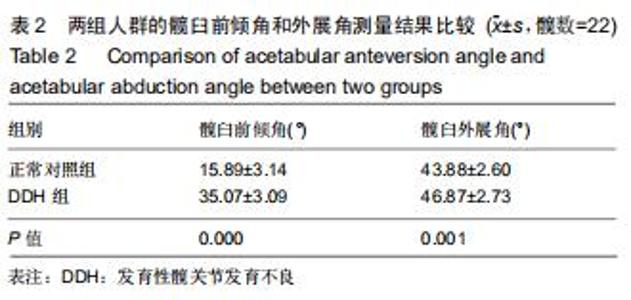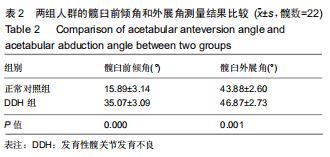Chinese Journal of Tissue Engineering Research ›› 2020, Vol. 24 ›› Issue (36): 5749-5754.doi: 10.3969/j.issn.2095-4344.2903
Previous Articles Next Articles
True acetabulum morphology of Crowe type IV developmental dysplasia of the hip based on three-dimensional surgical simulation
Kang Peng, Zhang Fangxin, Maihemuti·Yakufu, Wei Weitao, Yilihamu·Toheti, Aierken·Amudong
- Department of Sports Injury, Sixth Affiliated Hospital of Xinjiang Medical University, Urumqi 830000, Xinjiang Uygur Autonomous Region, China
-
Received:2020-02-18Revised:2020-02-26Accepted:2020-04-11Online:2020-12-28Published:2020-10-27 -
Contact:Aierken·Amudong, MD, Associate professor, Chief physician, Department of Sports Injury, Sixth Affiliated Hospital of Xinjiang Medical University, Urumqi 830000, Xinjiang Uygur Autonomous Region, China -
About author:Kang Peng, Master candidate, Department of Sports Injury, Sixth Affiliated Hospital of Xinjiang Medical University, Urumqi 830000, Xinjiang Uygur Autonomous Region, China -
Supported by:the Graduate Innovation and Entrepreneurship Start-Up Fund Project of Xinjiang Medical University, No. CXCY2018031; the Research and Innovation Project of Postgraduates in Xinjiang Uygur Autonomous Region, No. XJ2019G207
CLC Number:
Cite this article
Kang Peng, Zhang Fangxin, Maihemuti·Yakufu, Wei Weitao, Yilihamu·Toheti, Aierken·Amudong. True acetabulum morphology of Crowe type IV developmental dysplasia of the hip based on three-dimensional surgical simulation[J]. Chinese Journal of Tissue Engineering Research, 2020, 24(36): 5749-5754.
share this article
|
[1] TAMURA K, TAKAO M, HAMADA H, et al. Femoral morphology asymmetry in hip dysplasia makes radiological leg length measurement inaccurate. Bone Joint J. 2019;101-B(3):297-302.
[2] GREBER EM, PELT CE, GILILLAND JM, et al. Challenges in Total Hip Arthroplasty in the Setting of Developmental Dysplasia of the Hip. J Arthroplasty. 2017;32(9S):S38-S44.
[3] FALDINI C, NANNI M, LEONETTI D, et al. Total hip arthroplasty in developmental hip dysplasia using cementless tapered stem. Results after a minimum 10-year follow-up. Hip Int. 2011;21(4):415-420.
[4] PENG H, ZHANG G, XU C, et al. Is pseudoacetabulum an important factor determining SSTO application in total hip arthroplasty for Crowe IV hips? a retrospective cohort study. J Orthop Surg Res. 2019;14(1):201.
[5] ARGENSON JN, FLECHER X, PARRATTE S, et al. Anatomy of the dysplastic hip and consequences for total hip arthroplasty. Clin Orthop Relat Res. 2007;465:40-45.
[6] YILDIRIM T, GUCLU B, KARAGUVEN D, et al. Cementless total hip arthroplasty in developmental dysplasia of the hip with end stage osteoarthritis: 2-7 years' clinical results. Hip Int. 2015;25(5):442-446.
[7] PARK J, KIM GL, YANG KH. Anatomical landmarks for acetabular abduction in adult hips: the teardrop vs. the inferior acetabular rim. Surg Radiol Anat. 2019;41(12):1505-1511.
[8] ZHU B, SU C, HE Y, et al. Combined anteversion technique in total hip arthroplasty for Crowe IV developmental dysplasia of the hip. Hip Int. 2017;27(6):589-594.
[9] 范广,向川.髋臼假体置入角度对髋关节功能的影响[J].实用骨科杂志,2019,25(8): 740-743.
[10] KALTEIS T, HANDEL M, BÄTHIS H, et al. Imageless navigation for insertion of the acetabular component in total hip arthroplasty: is it as accurate as CT-based navigation?. J Bone Joint Surg Br. 2006;88(2):163-167.
[11] HOHMANN E, BRYANT A, TETSWORTH K. A comparison between imageless navigated and manual freehand technique acetabular cup placement in total hip arthroplasty. J Arthroplasty. 2011;26(7):1078-1082.
[12] WANG L, THORESON AR, TROUSDALE RT, et al. Two-dimensional and three-dimensional cup coverage in total hip arthroplasty with developmental dysplasia of the hip. J Biomech. 2013;46(10):1746-1751.
[13] SARIALI E, MAUPRIVEZ R, KHIAMI F, et al. Accuracy of the preoperative planning for cementless total hip arthroplasty. A randomised comparison between three-dimensional computerised planning and conventional templating. Orthop Traumatol Surg Res. 2012;98(2):151-158.
[14] XU J, LI D, MA RF, et al. Application of rapid prototyping pelvic model for patients with DDH to facilitate arthroplasty planning: a pilot study. J Arthroplasty. 2015;30(11):1963-1970.
[15] 芮敏,顾家烨,张云庆,等. 数字化三维重建技术在髋关节发育不良全髋关节置换术中的应用[J].临床骨科杂志, 2019, 22(2): 165-168.
[16] CAI Z, ZHAO Q, LI L, et al. Can computed tomography accurately measure acetabular anterversion in developmental dysplasia of the hip? verification and characterization using 3D printing technology. J Pediatr Orthop. 2018;38(4): e180-e185.
[17] 张衡,周建生. CT三维重建在成人髋关节发育不良髋臼形态研究中的进展[J].中华解剖与临床杂志,2014,19(6):519-522.
[18] 曾羿,赖欧杰,沈彬,等.计算机三维术前计划在CroweⅣ型髋关节发育不良全髋关节置换髋臼重建中的应用[J].中华骨科杂志, 2014,34(12):1212-1218.
[19] 曹力.发育性髋关节发育不良病人的全髋关节置换术:探索,挑战,求精[J].骨科,2018,9(5):337-340. [20] AKIYAMA M, NAKASHIMA Y, FUJII M, et al. Femoral anteversion is correlated with acetabular version and coverage in Asian women with anterior and global deficient subgroups of hip dysplasia: a CT study. Skeletal Radiol. 2012; 41(11):1411-1418.
[21] FUJII M, NAKASHIMA Y, SATO T, et al. Acetabular tilt correlates with acetabular version and coverage in hip dysplasia. Clin Orthop Relat Res. 2012;470(10):2827-2835.
[22] YOSHITANI J, KABATA T, KAJINO Y, et al. Morphometric geometrical analysis to determine the centre of the acetabular component placement in Crowe type IV hips undergoing total hip arthroplasty. Bone Joint J. 2019;101-B(2):189-197.
[23] LIU RY, WANG KZ, WANG CS, et al. Evaluation of medial acetabular wall bone stock in patients with developmental dysplasia of the hip using a helical computed tomography multiplanar reconstruction technique. Acta Radiol. 2009; 50(7):791-797.
[24] 肖瑜,张福江,马信龙,等.成人髋关节发育不良不同Crowe分型的三维CT影像学特征[J].中华骨科杂志,2014,34(3):311-316.
[25] OKUZU Y, GOTO K, KAWATA T, et al. The relationship between subluxation percentage of the femoroacetabular joint and acetabular width in Asian women with developmental dysplasia of the hip. J Bone Joint Surg Am. 2017;99(7):e31.
[26] YANG Y, ZUO J, LIU T, et al. Morphological analysis of true acetabulum in hip dysplasia (Crowe Classes I-IV) Via 3-D implantation simulation. J Bone Joint Surg Am. 2017;99(17): e92.
[27] CAO L, WANG Y, ZOU S, et al. A novel positioner for accurately sitting the acetabular component: a retrospective comparative study. J Orthop Surg Res. 2019;14(1):279.
[28] SHAO P, LI Z, YANG M, et al. Impact of acetabular reaming depth on reconstruction of rotation center in primary total hip arthroplasty. BMC Musculoskelet Disord. 2018;19(1):425.
[29] KIYAMA T, NAITO M, SHINODA T, et al. Hip abductor strengths after total hip arthroplasty via the lateral and posterolateral approaches. J Arthroplasty. 2010;25(1):76-80.
[30] ASAYAMA I, CHAMNONGKICH S, SIMPSON KJ, et al. Reconstructed hip joint position and abductor muscle strength after total hip arthroplasty. J Arthroplasty. 2005;20(4):414-420. [31] ZENG Y, LAI OJ, SHEN B, et al. Three-dimensional computerized preoperative planning of total hip arthroplasty with high-riding dislocation developmental dysplasia of the hip. Orthop Surg. 2014;6(2):95-102. |
| [1] | Ke Yuqi, Chen Changjian, Wu Hao, Zheng Lianjie. Comparison of 12-month follow-up results of primary total hip arthroplasty between modified direct anterior approach and direct anterior approach [J]. Chinese Journal of Tissue Engineering Research, 2023, 27(9): 1377-1382. |
| [2] | Zheng Hongrui, Zhang Wenjie, Wang Yunhua, He Bin, Shen Yajun, Fan Lei. Femoral neck system combined with platelet-rich plasma in the treatment of femoral neck fracture [J]. Chinese Journal of Tissue Engineering Research, 2023, 27(9): 1390-1395. |
| [3] | Du Xueting, Zhang Xiaodong, Chen Yanjun, Wang Mei, Chen Wubiao, Huang Wenhua. Application of compressed sensing technology in two-dimensional magnetic resonance imaging of the ankle joint [J]. Chinese Journal of Tissue Engineering Research, 2023, 27(9): 1396-1402. |
| [4] | Cai Zhihao, Xie Zhaoyong. Femoral neck anteversion measurement assessment: how to establish a unified method and standard [J]. Chinese Journal of Tissue Engineering Research, 2023, 27(9): 1448-1454. |
| [5] | He Yinhao, Li Xiaosheng, Chen Hongwen, Chen Tiezhu. 3D printed porous tantalum metal in the treatment of developmental dysplasia of the hip: current status and application prospect [J]. Chinese Journal of Tissue Engineering Research, 2023, 27(9): 1455-1461. |
| [6] | Sun Jiajia, Zhu Haidi, Lu Yun, Zhang Kai. Comparison of bone metabolism markers between type 2 diabetes mellitus and non-type 2 diabetes mellitus patients with hip fracture [J]. Chinese Journal of Tissue Engineering Research, 2023, 27(8): 1156-1160. |
| [7] | Bi Gengchao, Zhang Yanlong, Li Qiuyue, Hu Longwei, Zhang Yu. Knee joint mechanics and activation characteristics of surrounding muscles during deep jumps at different heights and distances [J]. Chinese Journal of Tissue Engineering Research, 2023, 27(8): 1211-1218. |
| [8] | Yuan Hucheng, Ding Yongguo, Ma Xuehua, Ma Wenxin, Sun Jianmin, Wang Zili, Jin Weidong. Sustained releasing of pyrazinamide, capreomycin, moxifloxacin and amikacin loaded bone cement in vitro [J]. Chinese Journal of Tissue Engineering Research, 2023, 27(7): 1017-1022. |
| [9] | Liao Yidong, Ming Jiang, Song Wenxue, Wang Zili, Zhang Yu, Liao Yifei, Xu Kaya, Yang Hua. An experimental method for simultaneously culturing primary cortical and hippocampal neurons [J]. Chinese Journal of Tissue Engineering Research, 2023, 27(6): 897-902. |
| [10] | Wu Yujie, Wan Xiaofang, Wei Mianxing, Peng Shiyuan, Xu Xiaomei. Correlation between autophagy and the Hippo-YAP protein pathway in periodental ligament cells on the pressure side of a mouse model of orthodontic tooth movement [J]. Chinese Journal of Tissue Engineering Research, 2023, 27(5): 683-689. |
| [11] | Xiong Bohan, Yu Yang, Lu Xiaojun, Wang Xu, Yang Tengyun, Zhang Yaozhang, Liao Xinyu, Zhou Xiaoxiang, He Lu, Li Yanlin. Research progress in promoting tendon to bone healing during anterior cruciate ligament reconstruction [J]. Chinese Journal of Tissue Engineering Research, 2023, 27(5): 779-786. |
| [12] | Liang Xiao, Zhao Panchao, Li Jiahui, Ji Zhongqiu, Jiang Guiping. Gait and biomechanical characteristics of lower limbs in multi-task walking of 4-6-year-old children [J]. Chinese Journal of Tissue Engineering Research, 2023, 27(4): 505-512. |
| [13] | Li Yaping, Liu Hong, Gao Zhen, Chen Xiaolin, Huang Wujie, Jiang Zheng. Three-dimensional motion analysis of lower limb biomechanical performance in Tai Chi practitioners accompanied by knee joint pain [J]. Chinese Journal of Tissue Engineering Research, 2023, 27(4): 520-526. |
| [14] | Wei Bo, Yao Qingqiang, Tang Cheng, Li Xuxiang, Xu Yan, Wang Liming. Advantage of medial pivot prosthesis in total knee arthroplasty via medial subvastus approach [J]. Chinese Journal of Tissue Engineering Research, 2023, 27(4): 552-557. |
| [15] | Hong Xiao, Luo Hong, Yang Ruonan. Comparison of dynamic hip screw and anti-rotation screw internal fixation and femoral neck system internal fixation in the treatment of Garden II-IV femoral neck fracture [J]. Chinese Journal of Tissue Engineering Research, 2023, 27(4): 583-587. |
| Viewed | ||||||
|
Full text |
|
|||||
|
Abstract |
|
|||||
